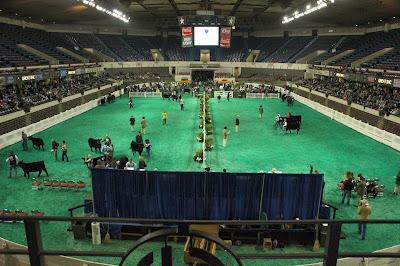Buzz, Buzz, Buzz
Fly's are EVERYWHERE! They eat meals with you and sometimes bother you, but if you're a farmer you probably have a more bothersome relationship with them. In The Tennessee Cattle Business magazine Dr. Justin Rhinehart, Beef Cattle Specialist, writes about "Cattle Fly Control: Preventing Economic Loss." In the article he specifically talks about the two most problematic flies: horn and face flies. Horn flies harm cattle by sucking their blood. I once got pretty banged up when a calf I was tying got bit by one, they do not like it at all! Dr. Rhinehart says, "They can also transmit causes of blood-borne diseases." Blood-borne diseases can be nasty stuff! The next fly is the face fly, they are the smaller ones that congregate around the head where they feast on the animal's mucus. Face flies help spread pinkeye! None of these side-effects of flies help the cattle or the farmer! If a lot of flies take over they can be very detrimental to our industry. Dr. Rhinehart gives examples of commonly used methods of fly control like rubs, dusts, feed, licks, sprays and ear tags. All these are good practices but if you use one continually the fly can become immune and then they become more hardy and harder to kill.
On our farm we use one practice, CHICKENS. We free-range our chickens which started (7 years ago) as 25 and has now amounted to around 175. Chickens eat the fly larva out of the manure and then scratch through it and distribute it so it doesn't stay in piles in turn speeding up decomposition and making your soil more fertile. However, to get the job done you don't need as many as I have! If you want a more natural, easier, cheaper, long term fly solution then chickens are your answer! Plus they give you eggs!
On our farm we use one practice, CHICKENS. We free-range our chickens which started (7 years ago) as 25 and has now amounted to around 175. Chickens eat the fly larva out of the manure and then scratch through it and distribute it so it doesn't stay in piles in turn speeding up decomposition and making your soil more fertile. However, to get the job done you don't need as many as I have! If you want a more natural, easier, cheaper, long term fly solution then chickens are your answer! Plus they give you eggs!


Comments
Post a Comment